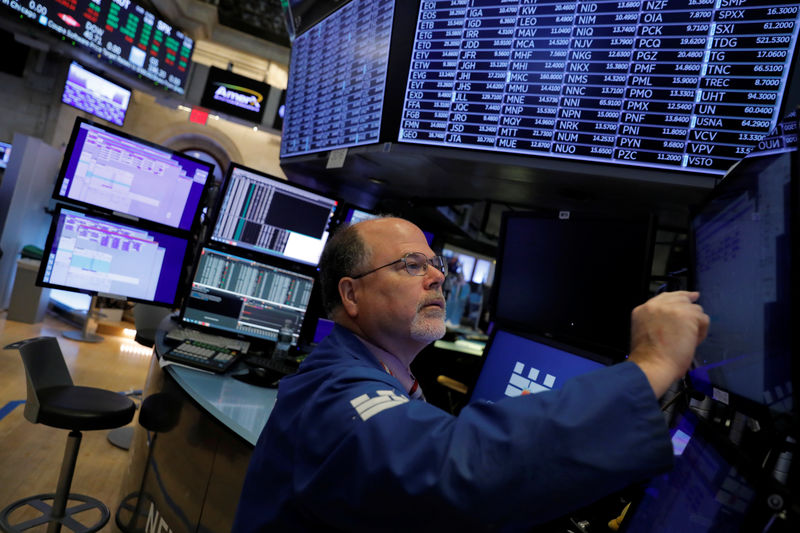By Herbert Lash and Rodrigo Campos
NEW YORK (Reuters) - Declining stocks on Wall Street weighed down a global equities gauge on Tuesday on lingering worries about the U.S.-China trade war, while demand for U.S. Treasuries and precious metals rose on recession fears.
The U.S. yield curve inversion deepened to levels not seen since 2007 and gold futures rose as recession concerns gripped investors. Silver touched a two-year high.
Stocks opened higher on Wall Street after U.S. President Donald Trump said China had offered to resume trade talks, though uncertainty prevailed as Beijing declined to confirm Trump's assertion.
U.S. stocks initially opened higher, building on Monday's advance after Trump's comments. China's foreign ministry, however, reiterated on Tuesday that it had not received any recent U.S. telephone calls on trade.
"It is going to be pretty confusing and unfortunately, without some kind of a major backpedaling on trade... the economy is going to suffer," said Jack Ablin, chief investment officer at Cresset Capital Management in Chicago.
Bank shares , which tend to weaken in lower rate and soft economic environments, lost 1% on Wall Street.
The Dow Jones Industrial Average (DJI) fell 120.93 points, or 0.47%, to 25,777.9, the S&P 500 (SPX) lost 9.22 points, or 0.32%, to 2,869.16 and the Nasdaq Composite (IXIC) dropped 26.79 points, or 0.34%, to 7,826.95.
The pan-European STOXX 600 index (STOXX) rose 0.63% and MSCI's gauge of stocks across the globe gained 0.03%.
Emerging market stocks rose 0.39%. Nikkei futures (NKc1) lost 0.66%.
The deepening yield curve inversion reflects investor nervousness about a recession and uncertainties over the trade conflict between China and the United States.
"It's not a sign of confidence in inflation or a pick-up in growth," said Mike Lorizio, head of Treasuries trading at Manulife Asset Management in Boston.
Benchmark 10-year notes last rose 21/32 in price to yield 1.4744%, from 1.544% late on Monday.
The yield curve inversion also pressured the dollar.
"You have seen a push deeper into inversion in the 2s/10s curve. Today, it's hard to put your finger on one specific driver of that inversion - though that might be contributing to the general sense of risk-off in the market," said Brian Daingerfield, macro strategist at RBS (LON:RBS) Securities.
The dollar fell against the safe-haven Japanese yen while the euro declined against the greenback.
The dollar index (DXY) fell 0.05%, with the euro (EUR=) down 0.1% to $1.1089.
The Japanese yen strengthened 0.35% versus the greenback at 105.77 per dollar, while Sterling was last trading at $1.2285, up 0.57% on the day.
Emerging market currencies suffered across the globe, with the Colombian peso brushing against its record low near 3,478 per dollar.
Oil prices rose, buoyed by expectations of a drawdown in U.S. crude inventories, though gains were capped by worries about a recession and uncertainty over a China-U.S. trade deal.
U.S. crude rose 3.45% to $55.49 per barrel and Brent was last at $59.91, up 2.06% on the day.
Spot gold added 1.1% to $1,542.70 an ounce. Spot silver gained 3.14% to $18.18 an ounce after touching its highest since September 2017.
